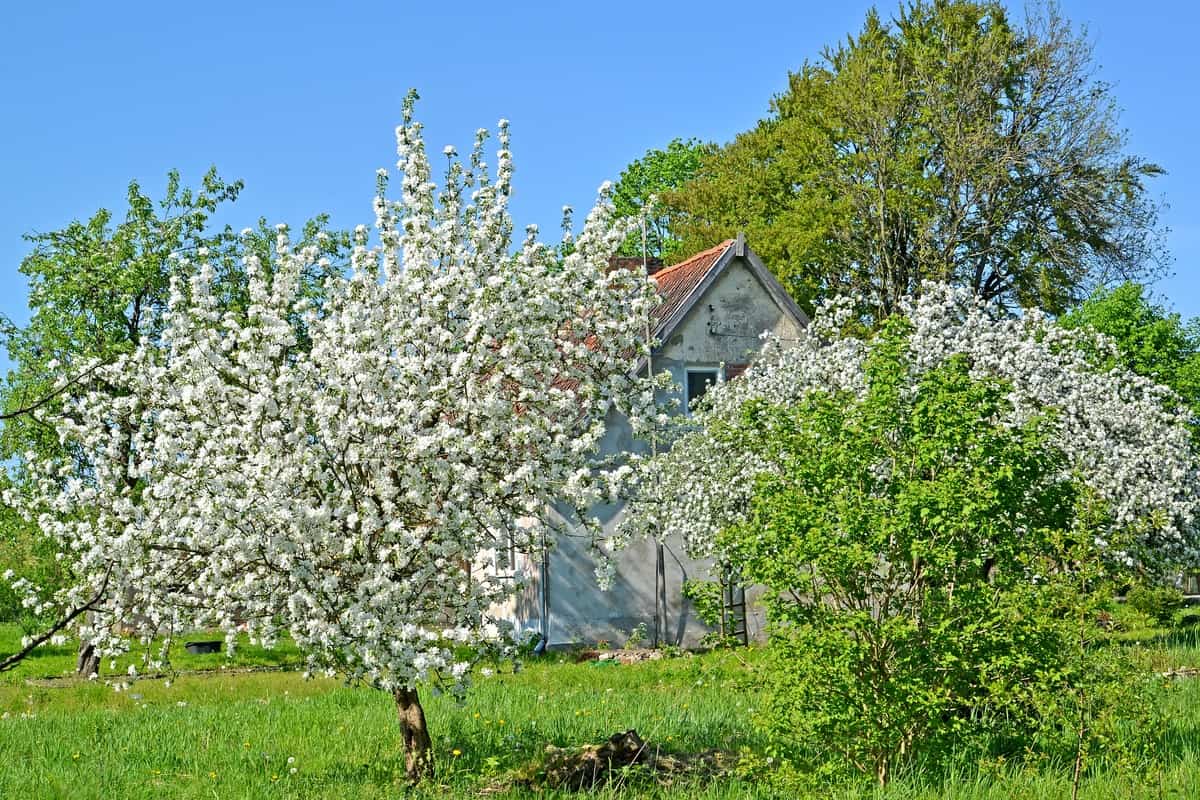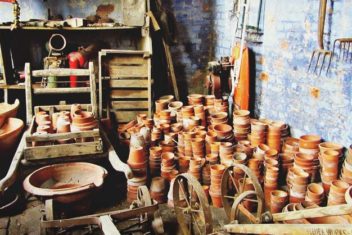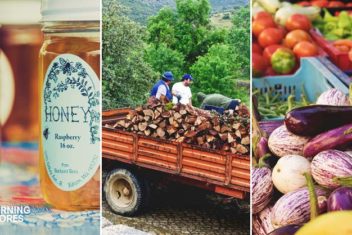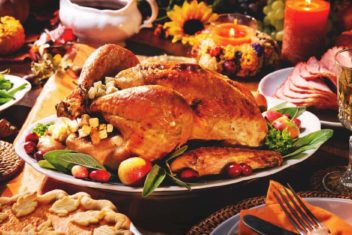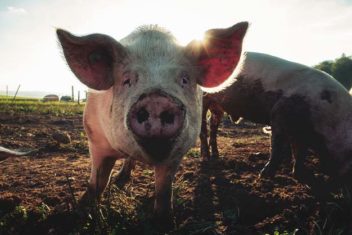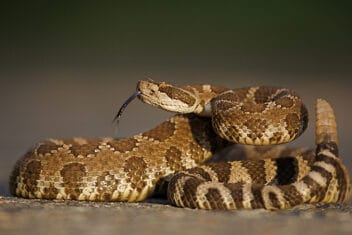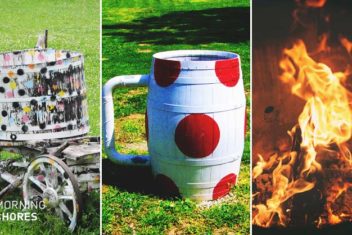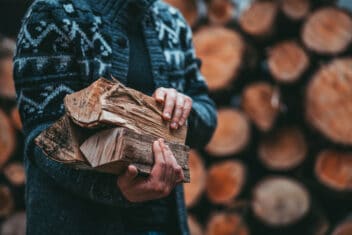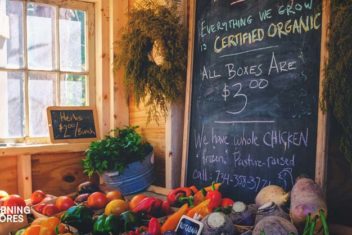Whether you’ve been living on your property for quite a few years or you just moved there, you might want to consider planting a few trees. After all, trees are some of the best additions you can make to a homestead.
They not only provide shade and ornamental value but many can be used for many other purposes. From fruit to nuts, heating to construction, trees are invaluable assets for the homestead.
So, which trees will give you the best return on your investment? Saplings can be expensive, so it’s important to make sure you’re choosing the right kind of tree for your farm. Here are some of the best options.
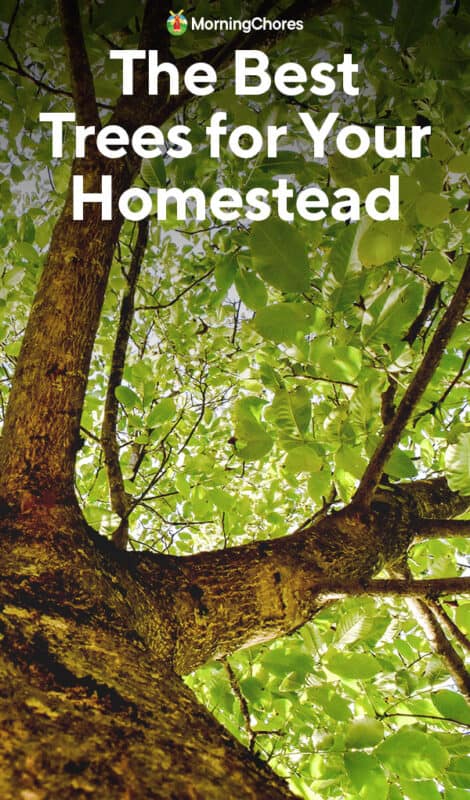
Best Fruit Trees
When it comes to growing trees on the homestead, many people think automatically of fruit trees. Here are some of the best trees to consider.
1. Plum

The plum, particularly the American plum (Prunus spp.), is a great tree to consider growing on the homestead. It won’t grow very tall, meaning it won’t block out other trees you might have planted. However, it produces delicious fruits that can be eaten raw or made into wines, juices, jellies, jams, or prunes (the dried version we all know and love).
Another interesting use of the plum tree is for protection. These trees grow in complex brambles, producing suckers and long branches that intertwine with each other to help keep out unwanted invaders.
2. Apple
Apple trees (Malus spp.) are a must-have on the homestead. There are dozens of varieties to choose from, so it should be easy for you to find the one that’s right for you.
Not only are apples great for eating fresh – and they can easily be stored in a root cellar – but they are also wonderful in apple butter, apple sauce, apple juice, and more.
Some good varieties to consider include ‘McIntosh,’ ‘Honeycrisp,’ and ‘Red Delicious.’
3. Mulberry
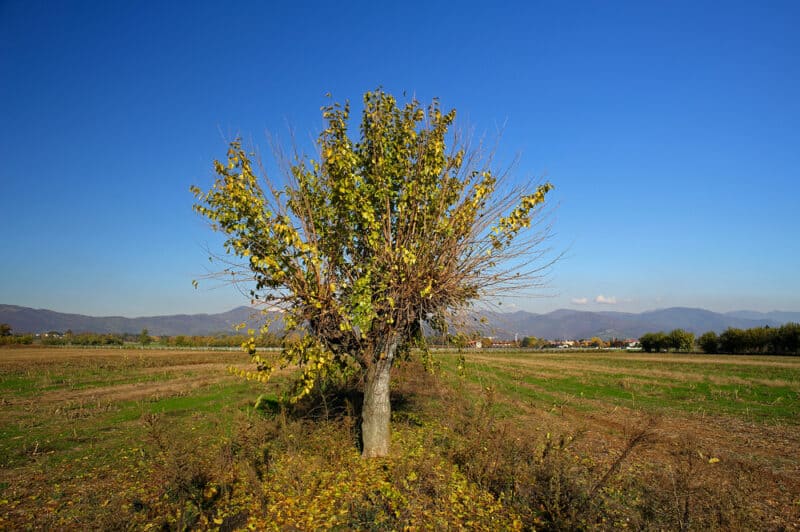
Mulberry (Morus spp.) is another one of the best trees for a homestead. There are all kinds of foods you can make from the fruits this tree produces – including tasty mulberry wine!
A fast-growing tree, the mulberry tree also produces wood that can be used for firewood. It is said that this tree produces more wood per acre than most other trees.
The only thing to note when growing mulberry trees is that they can cause asthma and other breathing problems. The pollen tends to be highly allergenic for some people – but the good news is that you can always choose to grow just female trees, which are considered allergy-free since they don’t have the pollen.
4. Pear
Pear trees (Pyrus spp.) are often overlooked but they’re even easier to grow than apples. Pear butter is just like apple butter and even sweeter.
The trees are not difficult to cultivate, with some reaching up to 30 feet tall. Of course, there are dwarf and semi-dwarf varieties you can grow, too. ‘Bartlett’ and ‘Anjou’ pears are both popular varieties for homesteads.
5. Peach
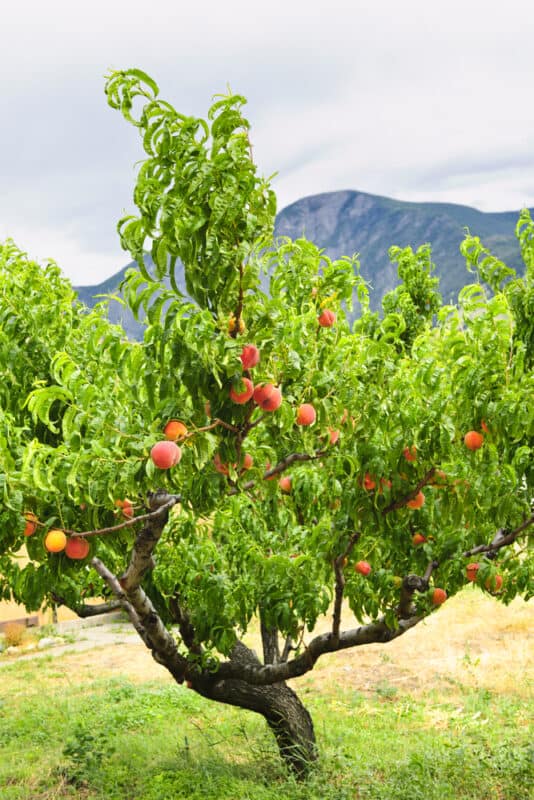
Although apple trees are wonderful assets to have on the homestead, the downside to growing these fruit trees is that they take quite a while to mature. That’s not the case with peach trees (Prunus persica). They can bear fruits in just five years!
You’ll need to do research as to which peach tree will thrive best in your area, as each cultivar has specific growing needs. Peaches like light, well-draining soil, and need full sunshine in order to produce. Here’s a tip for those of you in colder climates: train your peach trees espalier style against walls. The walls will reflect heat, creating ideal microclimates for your peaches to flower and fruit.
Peach bark and twigs can also be used to make a tincture that’s ideal for treating hot, inflamed insect bites and stings.
6. Fig
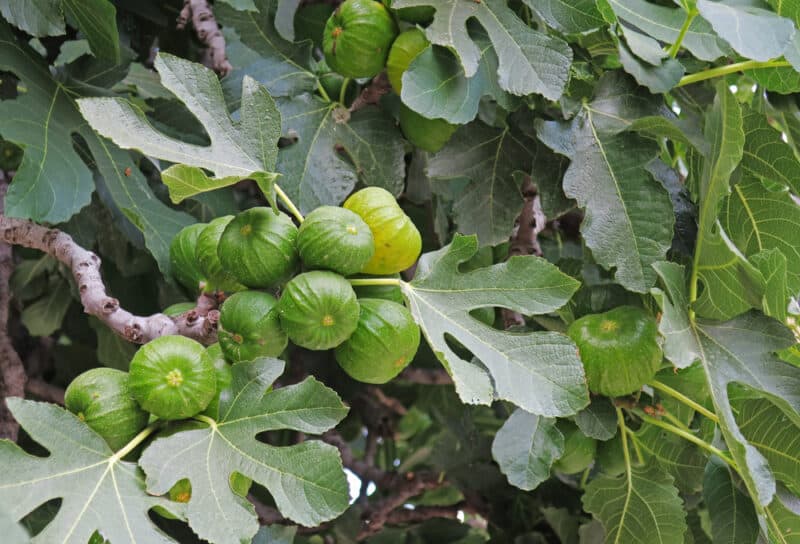
Although figs (Ficus spp.) probably aren’t the first fruits you think of when it comes to your homestead fruit supply, they should be at the top of your list. Fig trees are easy to grow, even for beginners, and they can even be grown in containers if you don’t live in a frost-free zone.
As long as you have a sunny spot indoors, you should be able to grow a fig tree. Just be careful if you have animal companions, as the foliage can be toxic to them if ingested.
7. Cherry
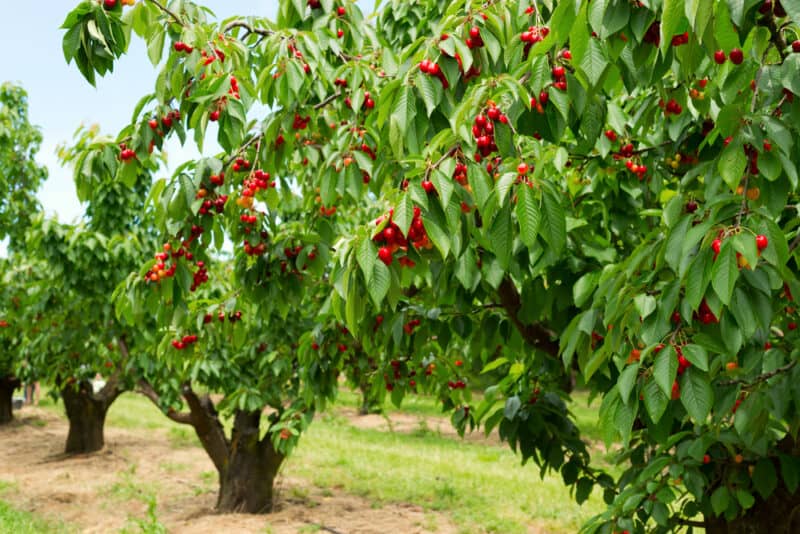
You can grow either sweet (Prunus avium) or sour cherry trees (Prunus cerasus) on your homestead (or why not both?). They are great for baking, juicing, and eating fresh.
Just be sure to choose either one or the other: although most cherry species are self-fertile, they can also cross-pollinate. If you grow sweet and sour cherry trees within 100 feet of each other, you may end up with some funky hybridized fruits.
In addition to bearing absolutely delicious fruits, cherry trees also have medicinal properties. Both cherry fruit syrup and tincture made from its twigs and bark make excellent expectorants, which are great for helping to eliminate phlegm from bronchitis, etc.
8. Nectarine
Like peaches, nectarine (Prunus persica) trees also grow fast, making them one of the best trees for your homestead if you’re in a hurry. They do need to be pruned regularly, but from just one tree, you’ll get up to 40 pounds of fruit each year – for up to 20 years or more!
These are free-stone fruits, which means that their flesh pulls away from the stones very easily. This makes them ideal for baking and preserves, as they’re so easy to harvest and process. Most nectarine trees are self-fertile, but check your available cultivars to make sure.
9. Apricot
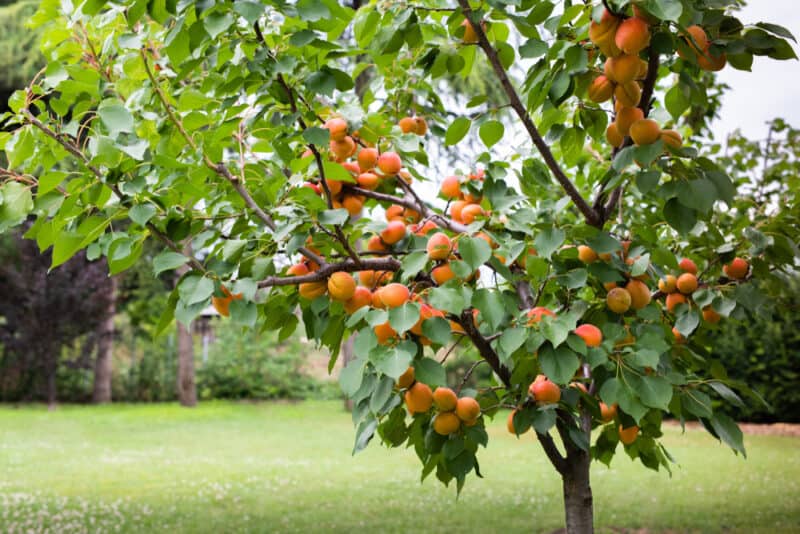
Apricot trees (Prunus armeniaca) take just 3 years to produce fruit after you’ve planted them, and can live for an average of 50 to 150 years – that’s quite the return on your investment! They require deep, well-drained, nutrient-rich soil, and a lot of sunshine in order to thrive well. Although some of them can survive down to zone 4, they can be sensitive to severe cold.
Note that some apricot varieties are self-fertile, while others are self-sterile and require cross-pollination. Make sure to do your research so you know which cultivars will work best for your land.
10. Elderberry
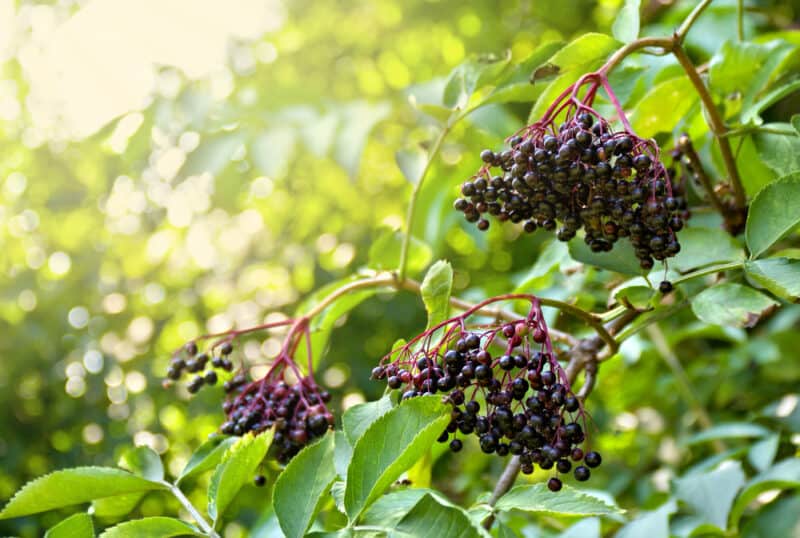
These trees (Sambucus sp.) can grow up to 12 feet tall and over 5 feet wide. They offer lusciously scented blooms that are lovely in cordials and wines, and fruits that are as delicious as they are medicinal. If you’re cultivating a homestead for both food and medicine, then elderberry is an absolute must-have species.
11. Hackberry
If you’re looking for a native North American species that’ll last a long time and provide you with a lot of fruit, then consider the hackberry (Celtis occidentalis). It’s not as popular now as it has been in the past, but it’s a prolific fruit tree that will grow in almost any soil, and withstand almost all weather conditions.
Hackberry is ideal in central and northern North America, but it’s incredibly adaptive. These trees will grow up to 40 feet tall and can live up to 200 years. Their nutrient-rich fruits are tiny and purple and taste like a cross between elderberries and currants.
12. Serviceberry
Serviceberries (Amelanchier alnifolia) are also known as Saskatoon Berries, Juneberries, and shadbush berries. They’re fairly small trees, reaching a height of about 14 feet at maturity, and they bear small, sweet purple fruits from July through to September, depending on your location.
Note that birds love these fruits as much as people do. If you’d like to actually harvest some of these berries for yourself, it’s a good idea to cover your trees with fine netting. That way, our feathered friends won’t get to all the fruit before you do.
13. Pawpaw
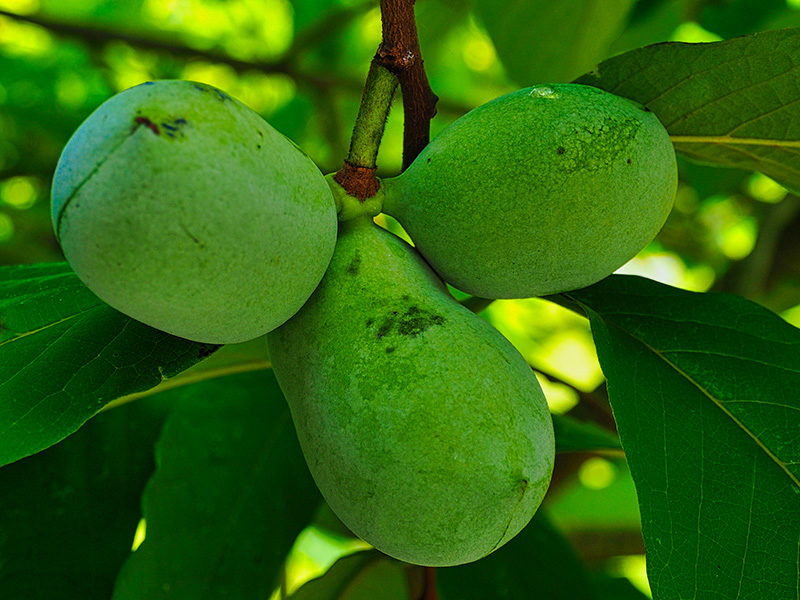
This indigenous North American tree (Asimina triloba) produces some of the most delicious fruits on the planet. It fell out of favor about a century ago, but has come back into the spotlight recently thanks to chefs who focus on foraged foods and native ingredients.
Pawpaw fruits taste like vanilla-banana custard with a hint of pineapple, making them rather ideal for homesteaders who have a sweet tooth.
Just be aware that these trees can grow up to 35 feet tall in the right conditions. If you’re growing them near walnut trees, which can grow 100 feet tall and up to 50 feet wide, make sure to prune the walnuts so your pawpaws get enough light and rainfall.
14. Olive
If you live in zones 9 through 12, you might want to consider growing some olive trees (Olea europaea) on your homestead. Their fruits might not be sweet, but they’re packed with Omega 3 fatty acids and beneficial nutrients.
Additionally, not only is their wood excellent to use for carvings and furniture, their leaves have significant medicinal properties. In fact, olive leaf is often used to treat shingles and other viral skin infections.
Best Nut Trees
Although fruit trees are wonderful to have on the farm, growing nut trees is a wonderful way to offset your grocery bill, too.
1. Almond
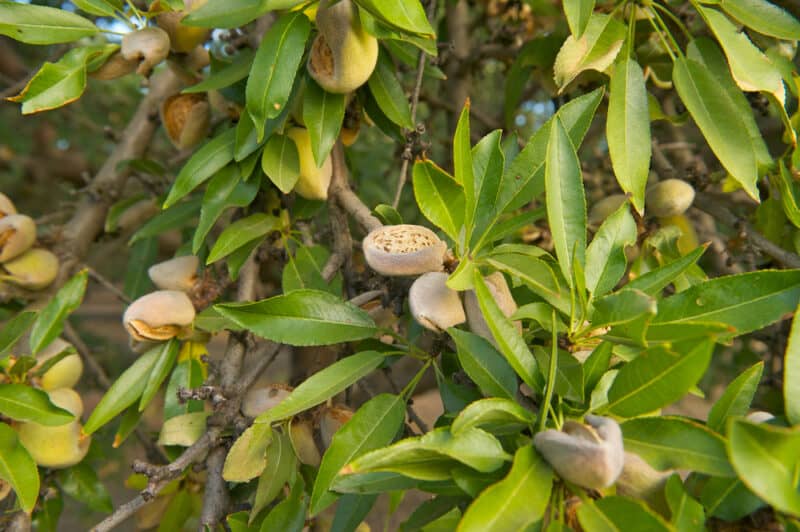
Almond trees (Prunus dulcis) are small, hardy nut trees that are ideal options for zones 5-9. Their nuts are nutrient-dense and full of fiber, and can also be processed into oil, flour, and non-dairy milk alternatives.
Just note that they’re not self-fertile, however, so you will need at least two cultivars for cross-pollination. Furthermore, those cultivars will all need to flower at the same time, or they’ll miss their fertile windows.
2. Walnut
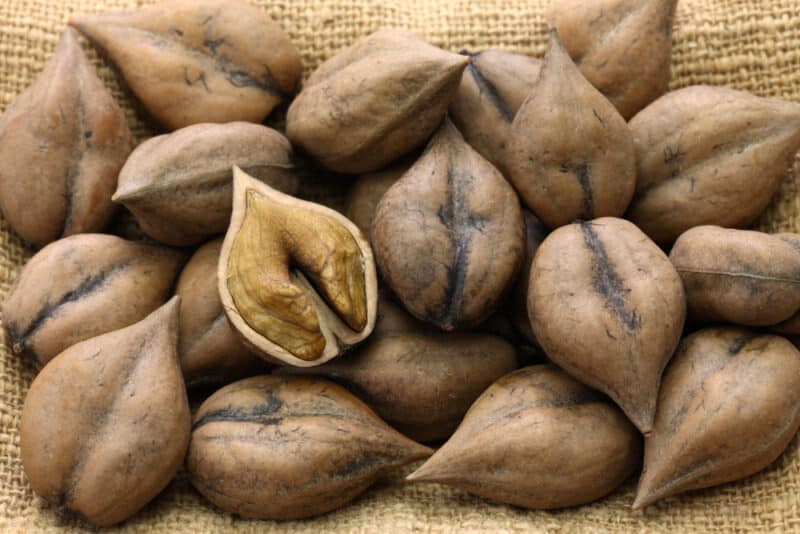
When it comes to growing trees for wood, walnut (Juglans sp.) is a top contender – but of course, many homesteaders will grow this leading species for nuts, too.
You’ll eat the nut center of the fruit, either fresh out of the shell or in your favorite baked goods. Walnuts can also be used to make ink and dyes while the wood is great for flooring, furniture, gun stocks, and more.
Note that walnut trees release a compound called juglone into the soil, which can be allelopathic to other plants around it. This means that it either stunts or prevents plant growth nearby. Fortunately, there are several homestead-friendly plants that are resistant to juglone and can be planted alongside it in guild form.
3. Chestnut
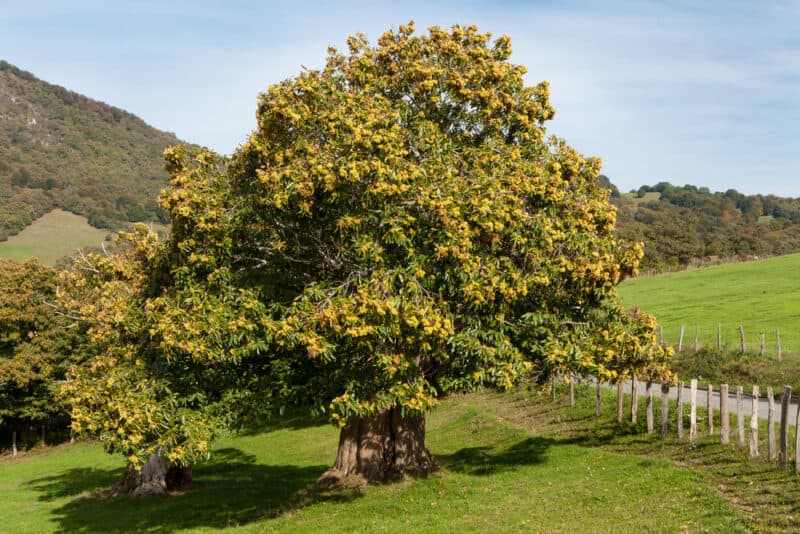
Chestnut trees (Castanea dentata) are hardy in zones 4-8. Although the wood can be used for building and firewood, it’s worth keeping a few chestnuts around for the delicious and versatile nuts alone.
They can be roasted and eaten as is, or added to desserts, soups, stews, and various baked goods.
Note that wild animals love chestnuts too, so you may have to fight a few squirrels for them.
4. Pecan
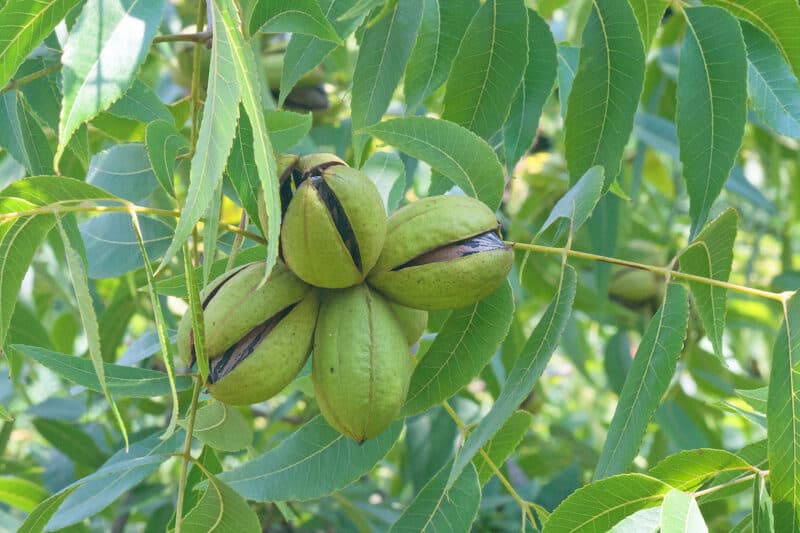
Pecan pie, anyone? These indigenous North American trees are staples in the north, and are hardy in zones 4-9. They’re related to hickories, and can be prolific nut producers for up to 300 years!
Although the trees grow to be quite large, it’s worth having a few pecan trees (Carya illinoinensis) around for snacking purposes. Their nuts are incredibly nutritious and packed with beneficial fats.
It’s important to note that although pecans are self-fertile, their male and female flowers often bloom at different times. As a result, you’ll get more nuts from your trees if you plant at least two or three pecan trees in the same vicinity. This way, they have a greater chance of being pollinated at the right time.
5. Hazelnut
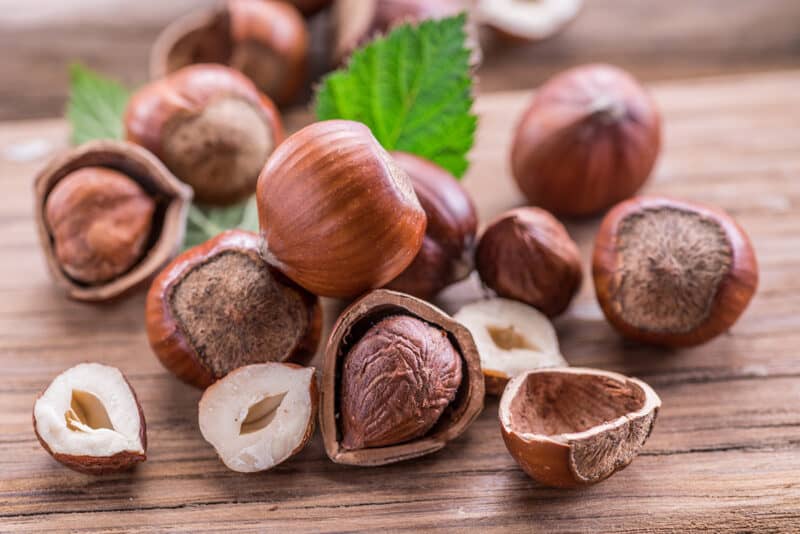
Hazelnuts are also good trees to consider growing, especially if you live in the north. In fact, some cultivars – such as the “beaked hazelnut” (Corylus cornuta) can survive in zones as cold as zone 2. At only 8 feet tall at full maturity, these are smaller trees that are exceptionally easy to care for.
As an added bonus, they can thrive in partial shade in addition to direct sunlight. This makes them an ideal understory plant.
6. Hazelbert
If you like hazelnuts, then you’ll love hazelberts as well. They’re hybrids between standard hazelnut trees and red filberts and offer larger, sweeter nuts than the standard variety. They’re also resistant to many diseases and insects!
Remember that hazelnut trees are all self-sterile, so you’ll need at least two different trees for them to cross-pollinate.
7. Butternut
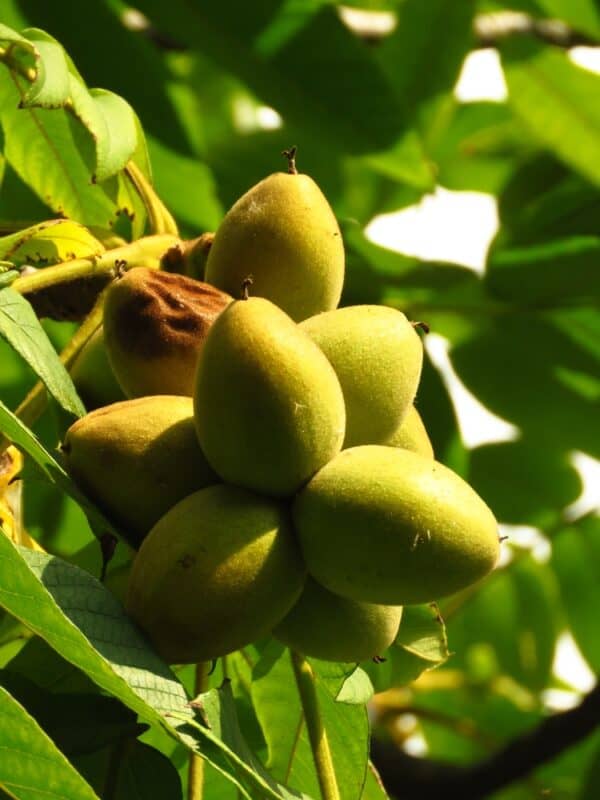
This walnut relative (Juglans cinerea) is common throughout the midwestern and northeastern United States, as well as in Canada from Quebec through to eastern New Brunswick.
Its nuts are similar to those of walnuts, though elongated and sweeter, and it doesn’t release quite as much juglone into the surrounding soil.
If you’re in a colder growing zone, then this tree is a better choice than the standard walnut. It will produce nuts right down to zone 3, and it’s self-fertile. This means that you don’t have to plant more than one of them in order to harvest delicious, nutrient-dense nuts.
8. Beech
One thing I’ve noticed time and again in my 20+ years of gardening is that species that are indigenous to an area will thrive far better than those that have been introduced.
For example, if beech trees (Fagus spp.) are native to your locale, they’re more likely to live for a long time and produce more nuts than you know what to do with than a nut tree that’s indigenous to the other side of the country.
Beech nuts are nutrient-dense, sweet, and really quite delicious. Be aware, however, that beeches don’t produce many nuts until they’re about 40 years old. That said, they can live for upwards of 200 years! If you’re planning on passing your property on to the next generation, these will be feeding your descendants for a good couple of centuries.
Best Trees for Firewood
Wood heat is one of the most sustainable sources of heat for your homestead, especially if you want to be self-sufficient. Here are some good trees to consider planting if that’s your ultimate goal.
1. Cedar
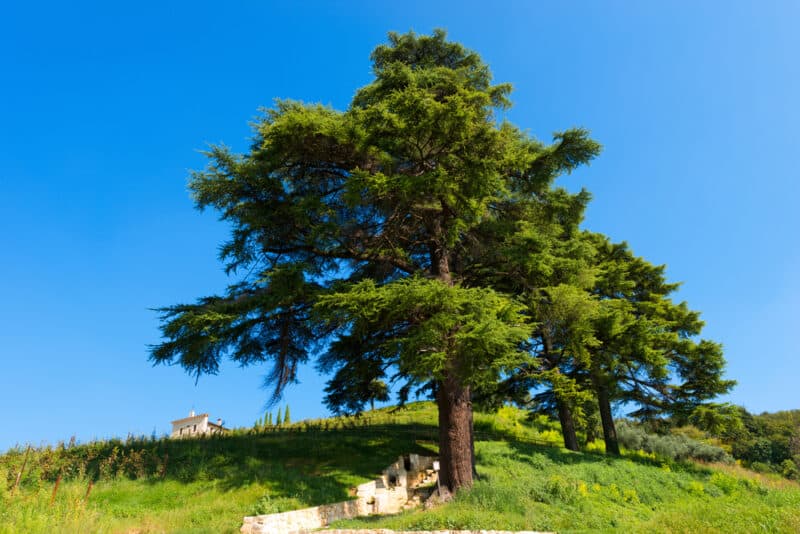
Out of all the trees you might use for firewood, cedar (Cedrus spp.) is one of the best. Although it’s technically a soft wood, it burns more slowly than pine or spruce, and releases a beautiful scent as it burns. This also makes it a great option for cooking with, such as baking salmon on cedar planks, or smoking it over a cedar fire.
In addition to being a great firewood, cedar is ideal for making furniture, and building fence posts, since it is one of the most rot-resistant woods out there. Its scent also repels moths and mice, making it a great choice for closets and storage chests. Alternatively, you can toss off-cuts into dresser drawers to fend off unwanted intruders.
Tea made from cedar leaves is also packed with vitamin C, making it a refreshing tonic to sip in wintertime, especially with some maple syrup or honey added. Finally, its shavings can also be used for some types of animal bedding, as well as garden mulch.
2. Pine
Pine trees (Pinus spp.) are ideal for almost any growing zone, and there’s undoubtedly a species that will thrive in your area. Furthermore, it’s a multi-purpose tree that has countless uses around the homestead.
As far as firewood goes, pine burns quickly since it is a softwood, but it ignites fast, too – meaning it’s a great way to get a fire started. Its lumber is great for building with as well, whether you’re using it for structures or furniture.
Pine secretes a resin that can be used for glue, roofing, and sealing, and also has significant medicinal properties. Finally, if you’re fond of pine nuts, you can harvest them from the cones too. In fact, if you’re a fan of pine nuts and you’re in the right growing zone, consider planting some Pinyon/Colorado pines (Pinus edulis). They create the largest, most flavorful nuts, which also happen to be easier to harvest than smaller varieties.
3. Oak
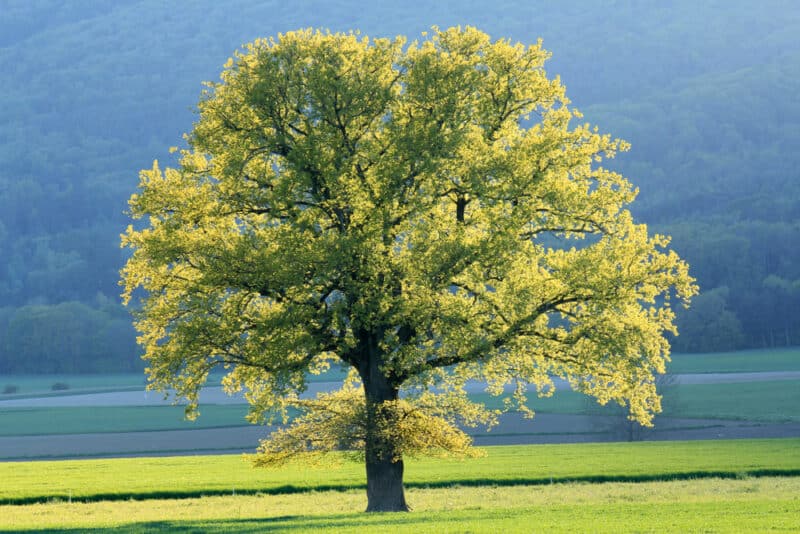
Oaks (Quercus spp.) can be grown for their acorns, but hardwood is also one of the best types of firewood you can produce. It produces a fire that burns long and hot. If you’re aiming to grow oaks for their edible acorns, then choose bur or white oak. These have the sweetest, tastiest acorns with the fewest tannins.
4. Hickory
Hickory (Carya spp.) is another hardwood tree species that works wonderfully as a source of heat. Its wood is also ideal for smoking foods in order to preserve them, and they just happen to offer delicious nuts as well. If you’re looking for multi-purpose homestead trees, definitely add hickory to your list.
In fact, if you’re a fan of hickory flavor, then plant shagbark hickory (C. ovata) in particular. The nuts taste similar to pecans, and the flavor imparted from its wood is incomparable.
Other Trees to Consider
In addition to being used for firewood and food, trees can even be used for protection, syrup-making, and other applications. Here are some great trees to consider planting.
1. Hawthorn
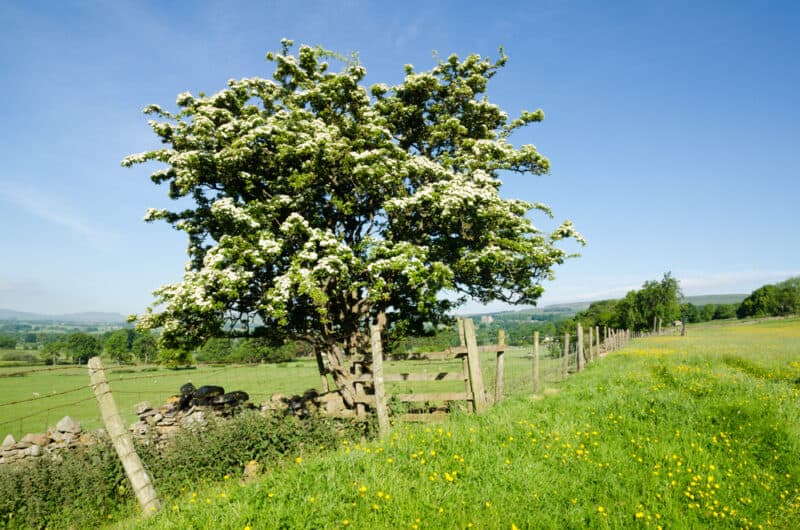
When planted close together, hawthorn (Crataegus spp.) can serve as an excellent line of defense. That’s because hawthorn trees have lots of thorns – trespassers beware!
Train the limbs of young trees to grow in long lines, rather than allowing them to grow upward. If you do this, it will create a natural fence that maintains itself over time (without needing pruning).
Of course, hawthorn can be grown for many other purposes as well.
Its leaves, berries, and flowers have been used for centuries to treat pulmonary conditions, circulatory issues, anxiety, and high cholesterol, among others. Furthermore, the berries are quite delicious when transformed into wine, jams, jellies, chutneys, syrups, and preserves.
2. Locust
While black locust and honey locust trees (Locusta spp.) both have their uses on a farm, honey locust is excellent for both security purposes and as a food source. These naturally thorny trees grow pods full of sweet, nutrient-rich pulp.
As an added benefit, these leguminous trees can also fix nitrogen into the soil.
If you’re growing locust trees, please ensure that you know which variety you’re growing. While honey locust pods are edible, black locust pods are poisonous. Don’t mistake the two.
3. Osage Orange
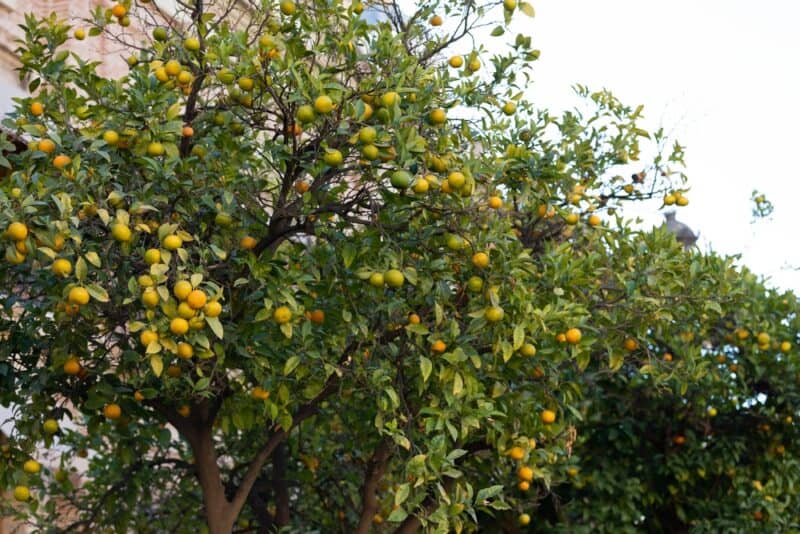
Osage orange is often grown as a natural fence, helping to deter humans and even larger animals, like cattle. This is because their branches are covered with thick, massive spines that can cause real damage to anyone who leans into them.
Since it grows so densely and puts down such strong roots, osage orange is also wonderful at preventing soil erosion. If you have a slope in need of stabilization, planting some osage orange trees is the way to go.
Additionally, the wood from this tree can be used for firewood as well as to make fence posts and other supplies.
4. JuJube
Many of the trees mentioned above are best for temperate areas, but if you live in a hot climate you’ll tend to consider the JuJube tree (Ziziphus jujuba). This one can easily handle sub-zero temperatures as well as those that climb close to 100F or more.
JuJube fruits can be made into vinegar or wine, but they can also be eaten fresh. Their fruits are packed with beneficial nutrients and vitamins and contain anti-fungal, anti-bacterial, anti-ulcer, and anti-inflammatory properties. They’re used extensively in Traditional Chinese and Korean Medicine, as well as Ayurvedic and Arabic medicinal practices.
As a final bonus, JuJube trees produce thorns too, making them ideal for natural defensive fencing.
5. Maple
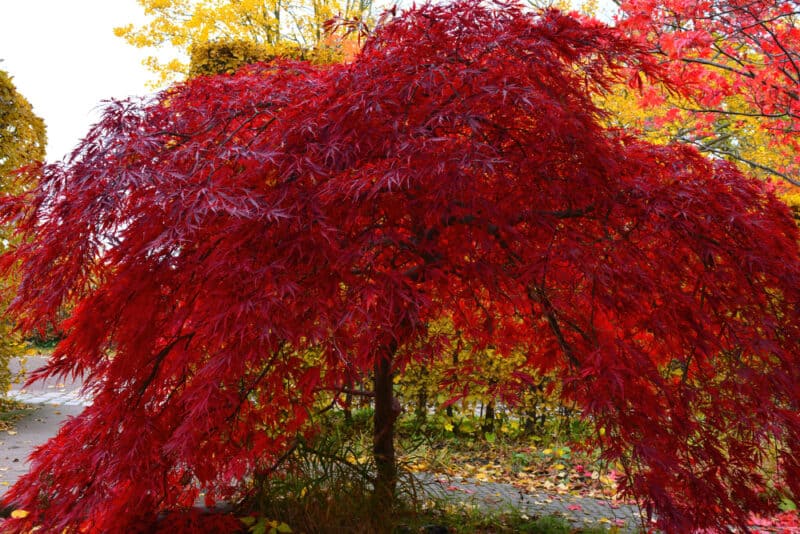
Many people grow maple trees (Acer spp.) for wood, as its timber can be used for exceptionally beautiful, long-lasting furniture. Maple also burns quite well, as it’s a hardwood and thus is long-burning, which is ideal for overnight wood stove use.
That said, some maple species can also be tapped for maple syrup. Maple syrup is easy to make at home and can help offset some of your home’s sugar needs. Furthermore, it’s a natural, unprocessed sweetener that’s nutrient-dense, and can provide essential carbohydrates.
If you’re aiming to tap your trees for syrup, ensure that you’re specifically growing sugar maples (Acer saccharum).
6. Moringa
Also known as the “drumstick tree”, Moringa (Moringa oleifera) is a multi-purpose plant that’s ideal for any homestead and can be grown outdoors or inside, depending on your local climate. They can only grow outdoors in zones 9 through 12, but you can grow them indoors in large pots.
Their leaves are packed with vitamins, minerals, and nutrients. Moringa leaves have more vitamin C than an orange, more iron than spinach, and 17 times more calcium than dairy. They’re also high in protein. These leaves can also be grown as forage for herbivorous homestead animals.
7. Basswood
Basswood (Tilia americana) has many uses – among them, its wood is great for making all kinds of crafts and projects. Not only that, but the inner bark fibers can be used to make baskets, ropes, and nets. The leaves can even be eaten like salad greens!
8. Willow
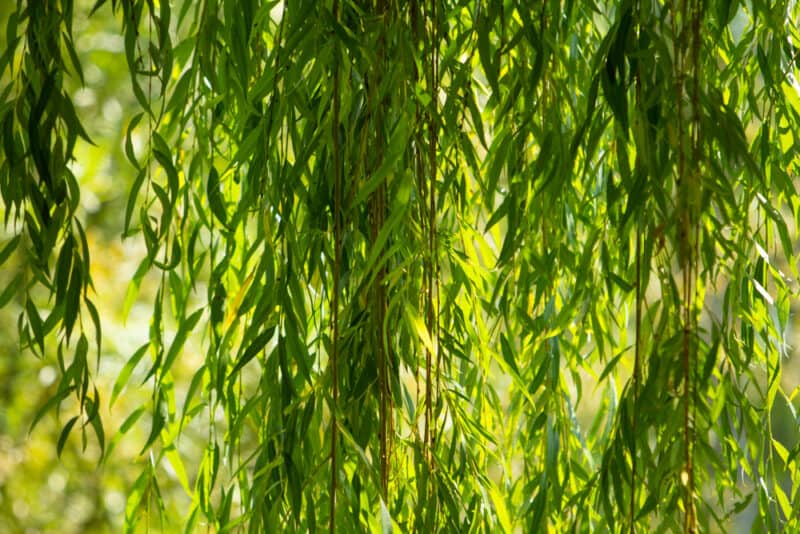
If your property borders a river or lake, or if there’s a creek or stream nearby, consider growing willow (Salix spp.). There are species to suit just about every growing zone, and different cultivars will have a variety of different uses.
For example, basket willow (Salix viminalis) is ideal for, well, basket weaving. And although all willow species contain salicin, white willow (Salix alba) has the highest concentration in its cambium. This is an ideal natural analgesic, and can be used in tea or tincture form when and if aspirin isn’t available.
9. Birch
Birch trees (Betula spp.) are ubiquitous throughout many parts of North America and Europe – so much so that many people prefer to remove them from their property rather than add them. That said, they’re actually wonderful trees to have on the homestead, even along the periphery.
This is because they, like sugar maples, produce a sweet, nutrient-rich sap that can be tapped in springtime when it runs. It has a slightly minty flavor, and it contains components such as betulinic acid, which has antiviral and anti-tumor qualities. The sap can also be used to treat kidney stones, scurvy, and gout.
As an added bonus, birch trees can also host chaga, which is an immensely beneficial medicinal fungus that’s treasured worldwide for its healing properties.
10. Lilac
Lilacs (Syringa vulgaris) are some of springtime’s most beautiful trees. They produce armfuls of sweetly scented blossoms, which just happen to be fully edible. Additionally, lilacs are ideal for enticing beneficial pollinators to your garden.
Consider planting some lilacs near your vegetable patch, or as hedging near your home. You can enjoy its sweet scents, transform the blossoms into syrup or desserts, and watch as bees and butterflies zip from the trees to your tomatoes.
11. Witch hazel
Since homesteading is about being as self-sufficient as possible, witch hazel (Hamamelis spp.) is an ideal medicinal tree to add to your land. The leaves, bark, and twigs have excellent astringent and antiseptic properties and can be used to treat eczema, poison ivy, diaper rash, contact dermatitis, acne, and various other skin conditions.
Growing Trees on the Homestead is a Smart Choice
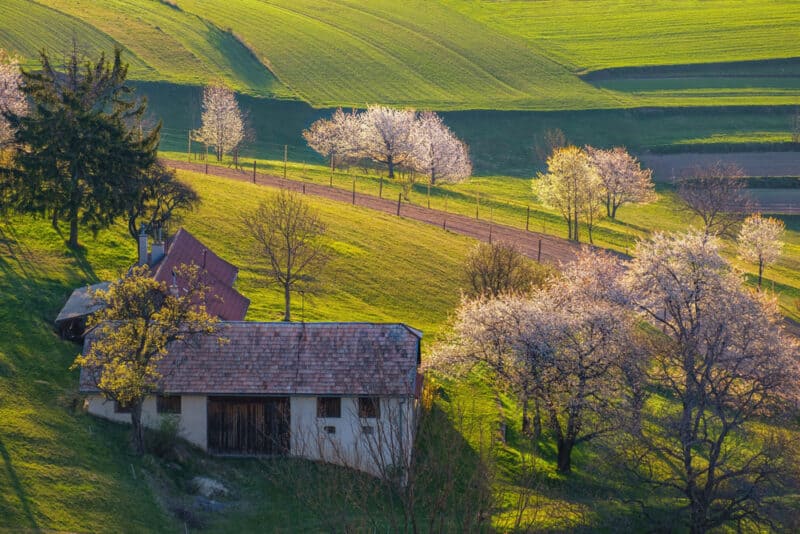
To decide which of these homestead trees you should grow, it’s wise to consider your climate, microclimate, and soil conditions. Additionally, be sure to grow the trees that you’re actually going to use.
If nobody in your house likes pears, then don’t grow those: focus on the species that are useful to as many household members as possible.
Contact your local cooperative extension to get more information about which trees grow best in your area. They may also be able to give you some suggestions on which pests and diseases are around and that your trees might be most vulnerable to.
With that information in mind, get planting! Growing trees is a smart choice to help become more self-sufficient on your homestead.
